[/caption]
Note: To celebrate the 20th anniversary of the Hubble Space Telescope, for ten days, Universe Today will feature highlights from two year slices of the life of the Hubble, focusing on its achievements as an astronomical observatory. Today’s article looks at the period April 2006 to April 2008.
The image of the Antennae galaxies, above, released on October, 17 2006, is bitter-sweet. On the one hand it’s a stunning image, even more spectacular than the one taken nine years earlier with WFPC2; on the other the star instrument which took it, Advanced Camera for Surveys (ACS), failed first in July 2006, and again in January 2007. On top of that, one by one the Hubble’s gyroscopes started to fail, and its batteries too. In October 2006 the new NASA Administrator, Mike Griffin, had given the go-ahead for one last Space Shuttle mission to the Hubble, for a final servicing. With failure following failure, the servicing mission become more and more complex, and it was hard to maintain optimism in the future of Hubble.
The ACS’ failure came after it had completed its part of the Cosmic Evolution Survey (COSMOS), which was a coordinated project involving many of the world’s leading observatories, both on the ground and in space (a bit like GOODS, which I covered in yesterday’s article). Among the successes of COSMOS was this 3D map of the distribution of dark matter.
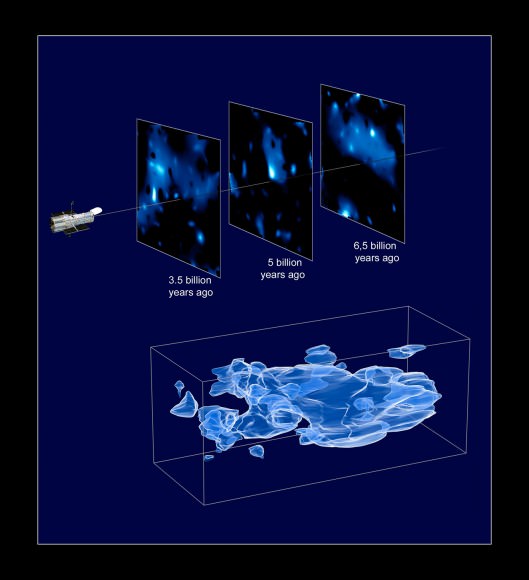
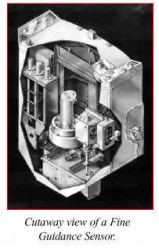
The way the Hubble keeps its gaze steady, during the sometimes quite long exposures of some of its instruments, is a marvel of modern engineering. Central to this intricate system is a set of sensors, called the Fine Guidance Sensors (FGS), which were designed to do science too, specifically astrometry.
The sensors aim the telescope by locking onto guide stars and measure the position of the telescope relative to the object being viewed. Adjustments based on these constant, minute measurements keep Hubble pointed precisely in the right direction.
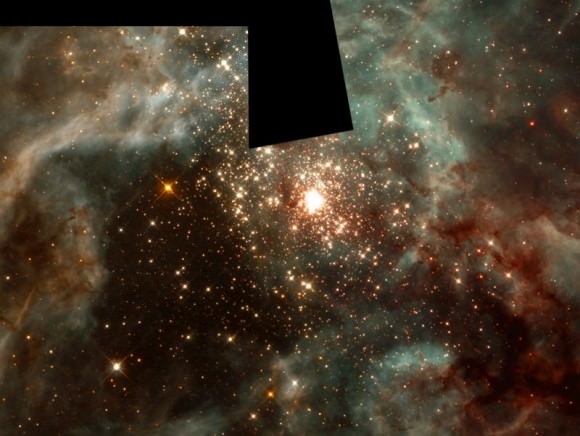
One of most interesting results from the FGS is the finding that the main star in the R136 cluster in the 30 Doradus nebula (better known as the Tarantula Nebula in the Large Magellanic Cloud) – R136a – is actually a triple (“Hubble Space Telescope Fine Guidance Sensor interferometric observations of the core of 30 Doradus“). Once upon a time the entire cluster was thought to be a single star, the most massive one ever seen; today R136a1 weighs in at ‘merely’ some 30 to 80 sols.
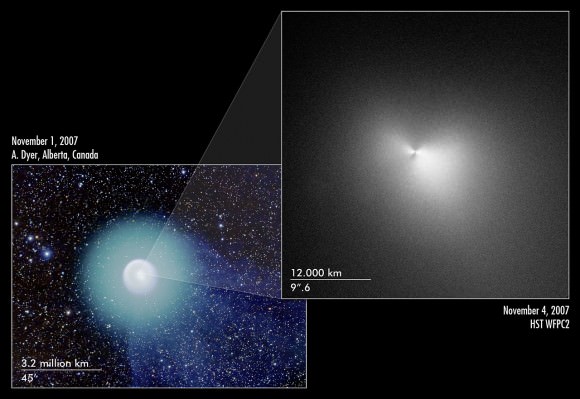
Comet Holmes is certainly one of the most memorable comets of recent times, not so much for its spectacular tail, but for its odd behavior; Hubble observed it several times Finally, Hubble’s View of Comet Holmes is the Universe Today story on this.
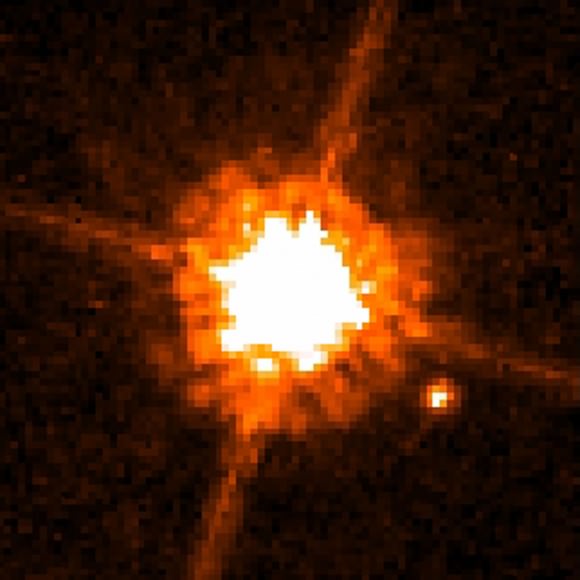
One of the most difficult challenges astronomers face, in doing science, is understanding and accounting for biases. For example, how could you tell, just by examining the approximately 6,000 stars you can see with your unaided vision, that none of them are examples of the most common kind of star! The nearest, brightest red dwarfs are far too faint to see without a telescope (do you know what their names are?), and it’s no easy matter to even find these stars. And what about stars that are fainter still, stars that aren’t quite stars, brown dwarfs? The first, certain, brown dwarf was not discovered until 1995, but since then our understanding of them has improved dramatically, and Hubble’s ACS has helped greatly in that understanding (see the Universe Today article on CHXR 73: Giant Planet or Failed Star?).
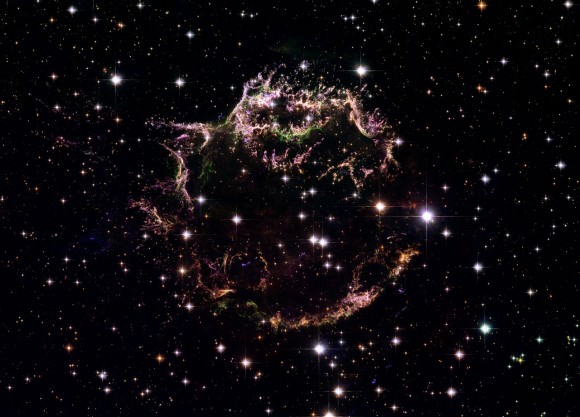
Cassiopeia A, or Cas A, is undoubtedly a supernova remnant. And it also results from a rather recent supernova; but which? There’s some uncertainty, but it seems it was seen, by the astronomer Flamsteed, in 1680. The ACS image above is the most detailed optical images of Cas A; Hubble’s View of Supernova Remnant Cassiopeia A.
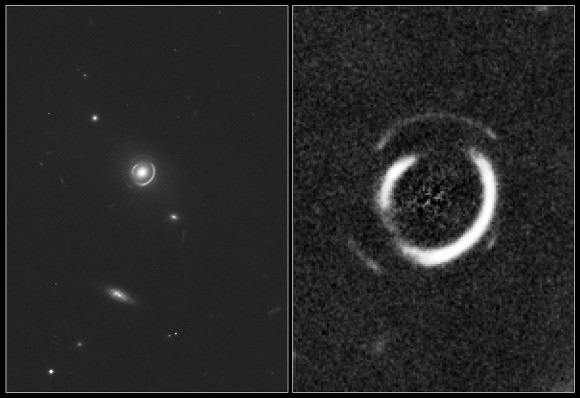
With a galaxy (or cluster) positioned just so in front of a more distant galaxy (or quasar), gravitational lensing will produce an Einstein ring (or a partial ring). Several such rings had been observed prior to 2008, but the one ACS snapped – of SDSSJ0946+1006 – turned out to be a double; three galaxies lined up one behind the other (the right hand image is a highly processed version of the left hand one, with the light of the massive, foreground elliptical galaxy removed). Hubble Sees a Double Einstein Ring.
Tomorrow: 2008 and 2009
Previous articles:
Hubble Turns Sixteen, and Just Keeps on Working
Hubble Enters its Teen Years, More Powerful, More Ambitious
Hubble’s 20th: At Least as Good as Any Human Photographer
Hubble’s 10th Birthday Gift: Measurement of the Hubble Constant
Hubble at 8: So Many Discoveries, So Quickly
Hubble’s 20 Years: Now We Are Six
Hubble’s 20 Years: Time for 20/20 Vision
Hubble: It Was Twenty Years Ago Today
Sources: HubbleSite, European Homepage for the NASA/ESA Hubble Space Telescope, The SAO/NASA Astrophysics Data System

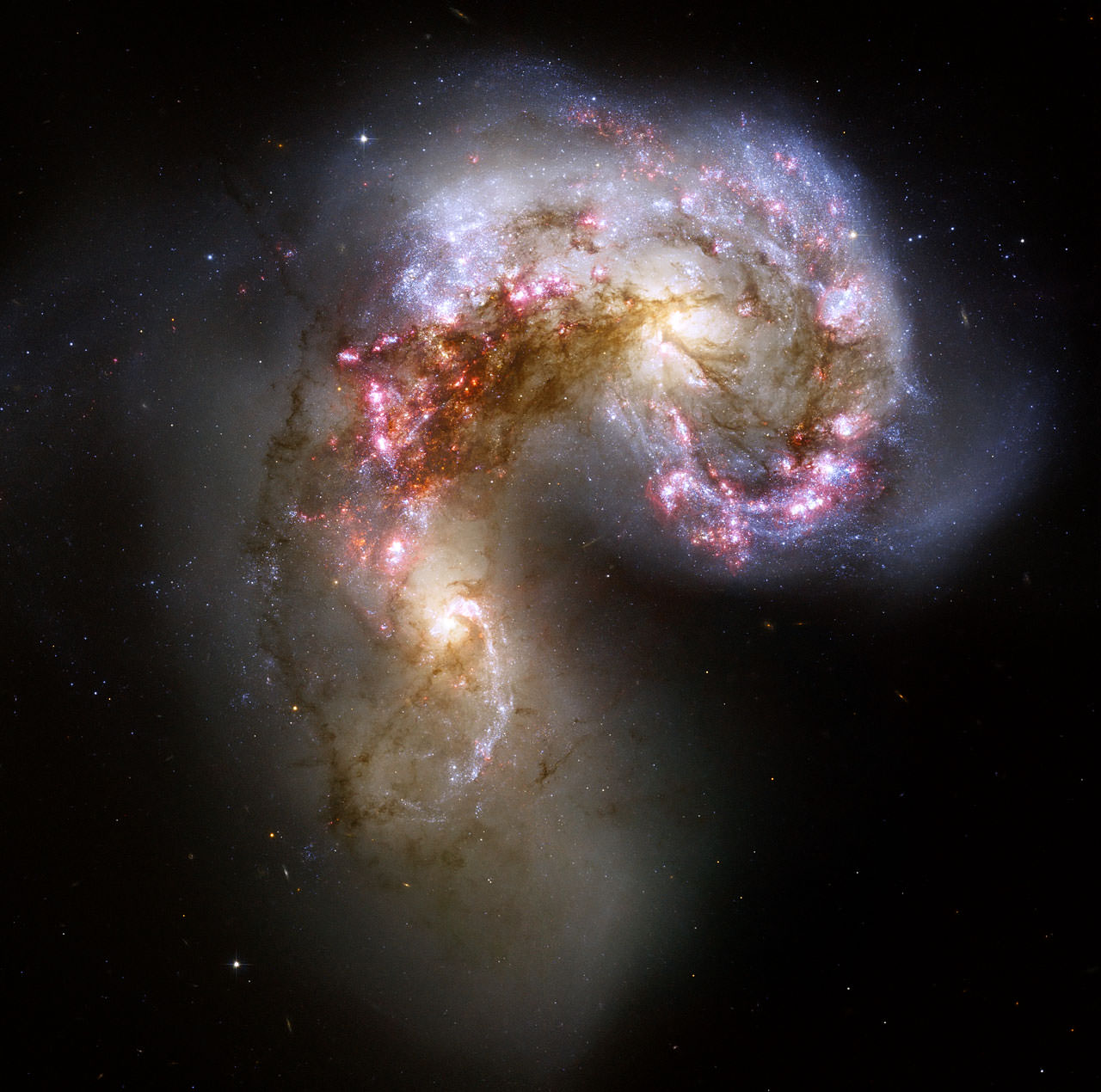
It was the best of times, it was the blurst of times.
It is interesting how gravitaitonal lensing and the Hubble relationship has lead to a map of the dark matter distribution.
LC